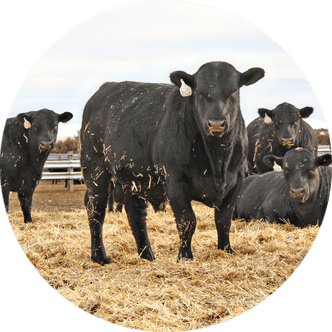Yogurt production soars as protein demand grows
Demand for foods high in protein continues to grow as America’s population ages and people want to develop leaner, healthier bodies and maintain muscle mass later in life.
Similar protein trends are taking place in industrialized regions like the European Union and Oceania and in countries like South Korea and Japan, according to Corey Geiger, lead dairy economist at CoBank.
“In the dairy space, this has been propelling sales of high-quality whey proteins, cheese, cottage cheese and yogurt. In addition to its high-protein profile, yogurt has other health advantages, as the probiotics found in dairy food have been shown to enhance gut health and aid digestion,” Geiger says.
Additionally, yogurt has been shown to reduce the risk of Type 2 diabetes. Specific to this claim, the U.S. Food and Drug Administration considers two cups – three servings – per week of yogurt to be the minimum consumption level for this qualified health claim.
“These multiple nutrition advantages have been boosting yogurt consumption and production, and it’s a win for dairy farmers,” Geiger says.
In 2023, the U.S. produced 4.6 billion pounds of yogurt and climbed 6.3 percent to reach 4.9 billion pounds last year. The 2024 yogurt production total breaks the previous record of 4.76 billion pounds in 2014.
Through the first four months of this year, U.S. yogurt production has grown another 6.7 percent. In addition, sales were up nearly 11 percent in May, according to data from Dairy Management, Inc.
Making headlines for years
In the U.S., Hamdi Ulukaya revolutionized the yogurt category when he introduced Greek yogurt to the marketplace.
“In just 20 years since its founding, Ulukaya proved American consumers would indeed purchase and consume lower-sugar, high-protein yogurt,” Geiger says. “As a result, his Chobani brand has become the category leader. Last year, the Greek protein category approached $6 billion in sales, accounting for one-half of all yogurt sales.”
While one would think the upside is limited after this major growth, it’s hardly the case, Geiger says.
“The average American eats about 14 pounds of yogurt each year. Europe, France and Germany have per-capita annual consumption levels well over 40 pounds per person,” he states.
Geiger notes this is one of the reasons multiple U.S. dairy processors have invested even more in the category.
“This March, Chobani announced it would invest $500 million in its Twin Falls, Idaho facility to grow its signature product,” he says. “The company projects the investment will expand production by 50 percent.”
Just one month later, Chobani announced a $1.2 billion plant in Rome, N.Y.
“When fully up and running, the plant will process 12 million pounds of milk per day and investment will double the company’s workforce,” Geiger explains. “For those following the overall dairy plant investment in the U.S., these two most recent expansions put total dairy processing investment at over $10 billion. This alone speaks to what dairy processors believe the future of dairy is in this country.”
The Upstate Niagara Cooperative is also investing in plant upgrades, he says.
“The farmer-owned cooperative is investing $250 million into its West Seneca, N.Y. plant. In addition to expanded cottage cheese capacity, the co-op will produce more yogurt and skyr, which is an Icelandic version of high-protein yogurt. Byrne Dairy, located near Cortlandville, N.Y. is also planning an expansion centered on yogurt,” Geiger continues.
Geiger believes these three investments will further cement New York as the nation’s largest yogurt manufacturer.
Four categories to shine
GLP-1 weight loss drugs such as Ozempic have been gaining popularity as Americans look to lose weight. These drugs curb appetite and, in turn, people eat less food. This is good news for consumers looking to shed pounds and improve health. However, for food manufacturers, it means lower sales.
To fully consider the potential impact, Cornell researchers evaluated over 40 food categories and determined 36 could realize fewer sales, Geiger says.
“Among the four that may potentially see gains by those consumers on GLP-1 weight loss drugs are nutrition bars, in which whey protein is often a major ingredient, meat snacks and fresh produce. Topping the list of four product winners is yogurt,” he states.
This is yet another reason yogurt is having its moment and will shine even brighter, Geiger says.
Fran O’Leary is the senior editor of the Wisconsin Agriculturist. This article was originally published in the Wisconsin Agriculturist on June 16.





